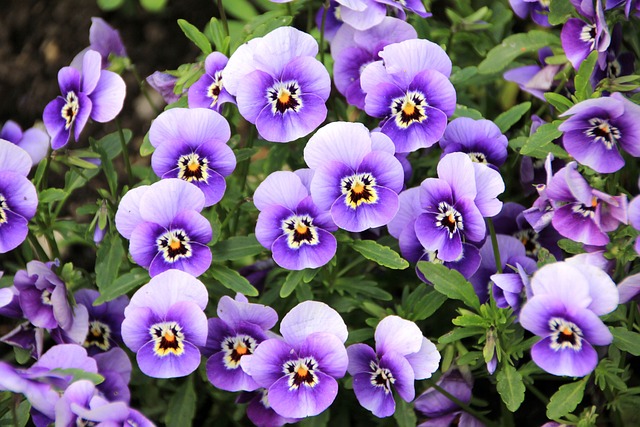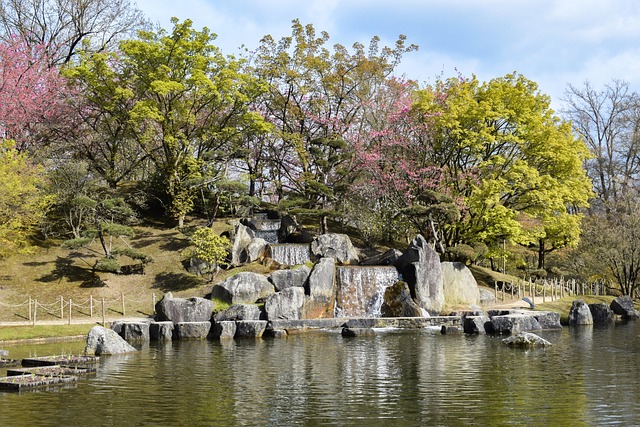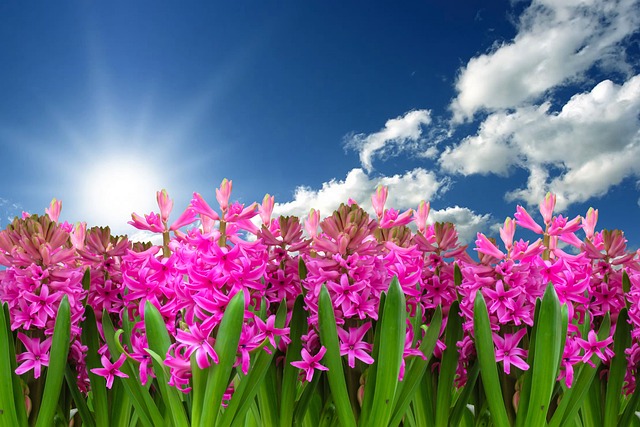Incorporating drought-tolerant plants into landscape design enhances navigation and aesthetics in water-scarce areas, creating sustainable, low-maintenance outdoor spaces. Strategic planning involves understanding user flow, implementing meandering paths, and using visually appealing borders defined by durable materials like natural stones or concrete blocks. These plants not only reduce maintenance but also provide shade, mitigate erosion, and support wildlife, adding depth and visual engagement throughout the year with minimal water requirements.
Designing paths and borders isn’t just about aesthetics; it’s crucial for creating a functional, low-maintenance landscape. This guide explores how to seamlessly navigate your outdoor space with strategic planning and eco-friendly solutions. We delve into the world of drought-tolerant plants, essential for reducing water usage, and their role in defining landscapes. Learn effective path planning techniques, durable border material options, and plant choices that elevate both visual appeal and practicality.
- Understanding Drought-Tolerant Plants and Their Role in Landscape Design
- Planning the Path: Strategies for Efficient Navigation
- Choosing Materials for Durable Borders
- Incorporating Plants to Enhance Visual Appeal and Functionality
Understanding Drought-Tolerant Plants and Their Role in Landscape Design

In landscape design, incorporating drought-tolerant plants is a strategic move that enhances navigation and aesthetic appeal, especially in areas prone to water scarcity. These plants play a pivotal role in creating sustainable and low-maintenance outdoor spaces. Their ability to thrive with minimal water makes them ideal for defining paths and borders, ensuring your garden remains vibrant even during dry spells.
When designing with drought-tolerant plants, the focus shifts from frequent irrigation to selecting species that can endure prolonged periods of dryness. This approach not only conserves water but also reduces the time spent on gardening maintenance. Incorporating these plants along pathways and borders provides a natural, low-effort solution for navigation, allowing you to create beautiful, self-sustaining outdoor environments.
Planning the Path: Strategies for Efficient Navigation

When designing paths and borders, strategic planning is key to ensuring efficient navigation in any outdoor space. The first step involves considering the overall flow and functionality of the area. Think about the primary routes that users will take and identify potential problem areas where congestion might occur. Incorporating meandering paths, for instance, can encourage visitors to explore different sections of the garden while spreading out foot traffic. Additionally, using drought-tolerant plants along these paths not only reduces maintenance needs but also provides an attractive, low-care option for landscaping.
To enhance navigation further, consider incorporating visual cues and subtle borders. Planting strips of drought-tolerant grasses or low-growing shrubs can define pathways and provide a clear separation from surrounding garden areas. These borders not only guide users but also add texture and visual interest. Moreover, strategic placement of benches, pergolas, or other resting spots along these paths allows visitors to take breaks while still maintaining easy access to their desired destinations, ensuring a pleasant and efficient navigation experience.
Choosing Materials for Durable Borders

When designing borders, selecting materials that can withstand wear and tear is essential for long-term navigation ease. Durable borders not only provide clear visual cues but also ensure that paths remain defined over time. One effective choice is using natural stones or concrete blocks, which offer both longevity and an aesthetically pleasing look. These materials are robust enough to handle foot traffic and weather conditions without losing their shape or color.
In regions with harsh climates or water scarcity, opting for drought-tolerant plants alongside these borders can further enhance durability. Plants like lavender, succulents, and certain types of grasses require minimal irrigation once established and can thrive in dry conditions. This combination of hardscaping materials and strategic planting ensures that paths remain distinct, even under challenging environmental circumstances.
Incorporating Plants to Enhance Visual Appeal and Functionality

Incorporating plants into path and border design is a powerful way to enhance both visual appeal and functionality. Drought-tolerant species are particularly well-suited for this purpose, as they not only add beauty but also reduce maintenance requirements. Plants can serve as natural borders, defining spaces and guiding foot traffic while creating a soothing, natural atmosphere. Their vibrant colors and textures offer seasonal interest, ensuring your paths remain visually engaging throughout the year.
Strategically placed plants along pathways can provide shade, mitigate soil erosion, and create microclimates that support diverse wildlife. Opt for varieties with attractive foliage or showy flowers to add depth and dimension to your design. Drought-tolerant plants, such as succulents and certain grasses, are excellent choices for low-maintenance borders, ensuring your paths remain inviting without excessive watering demands.
Designing paths and borders that facilitate easy navigation not only enhances a landscape’s aesthetic appeal but also promotes sustainability. By understanding the role of drought-tolerant plants in landscape design, planning efficient path strategies, choosing durable materials for borders, and incorporating visually appealing yet functional flora, you can create outdoor spaces that are both beautiful and low-maintenance. These practices ensure your landscape not only thrives under challenging conditions but also provide a harmonious and accessible environment for all to enjoy.
